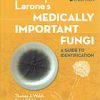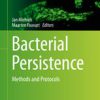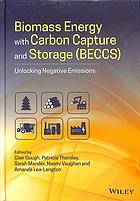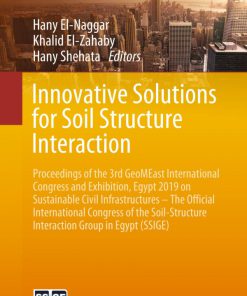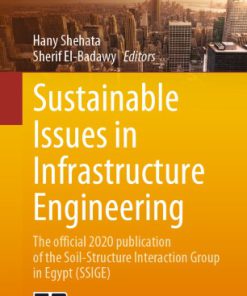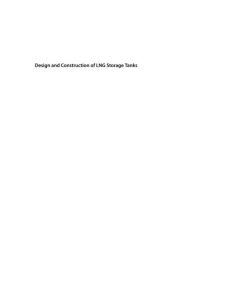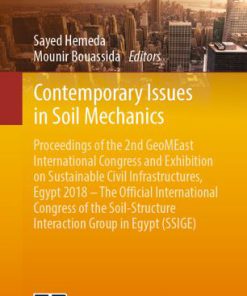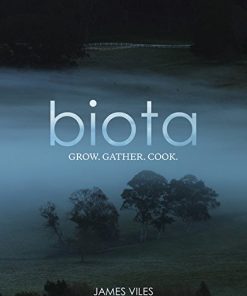Mycorrhizal Mediation of Soil Fertility Structure and Carbon Storage 1st edition by Nancy Collins Johnson, Catherine Gehring, Jan Jansa 0128043830 9780128043837
$50.00 Original price was: $50.00.$25.00Current price is: $25.00.
Mycorrhizal Mediation of Soil Fertility, Structure, and Carbon Storage 1st edition by Nancy Collins Johnson, Catherine Gehring, Jan Jansa – Ebook PDF Instant Download/DeliveryISBN: 0128043830, 9780128043837
Full download Mycorrhizal Mediation of Soil Fertility, Structure, and Carbon Storage 1st edition after payment.
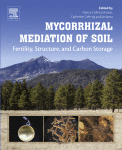
Product details:
ISBN-10 : 0128043830
ISBN-13 : 9780128043837
Author: Nancy Collins Johnson, Catherine Gehring, Jan Jansa
Mycorrhizal Mediation of Soil: Fertility, Structure, and Carbon Storage offers a better understanding of mycorrhizal mediation that will help inform earth system models and subsequently improve the accuracy of global carbon model predictions. Mycorrhizas transport tremendous quantities of plant-derived carbon below ground and are increasingly recognized for their importance in the creation, structure, and function of soils. Different global carbon models vary widely in their predictions of the dynamics of the terrestrial carbon pool, ranging from a large sink to a large source.
Mycorrhizal Mediation of Soil Fertility, Structure, and Carbon Storage 1st Table of contents:
Chapter 1. Mycorrhizas: At the Interface of Biological, Soil, and Earth Sciences
1.1. Successful Coexistence of Plants and Fungi
1.2. Mycorrhizal Research: Past, Present, and Future
1.3. Goals and Objectives
Section I. Mycorrhizal Mediation of Soil Development
Chapter 2. Mycorrhizal Symbioses and Pedogenesis Throughout Earth’s History
2.1. The Importance of Reciprocal Effects of Plant–Mycorrhiza–Soil Interactions in the Evolution and Assembly of Terrestrial Ecosystems
2.2. Plants and Mycorrhizas as Agents of Pedogenesis: Coupling Plant Photosynthate Energy to the Actions of Fungal Mycelial Networks
2.3. Evolutionary Origins of Plants and Mycorrhizas
2.4. Coevolution of Plants, Mycorrhizas, and Photosynthate-Driven Weathering and Pedogenesis
2.5. Feedback Between Plant-Driven Pedogenesis, Global Biogeochemical Cycles, and the Evolution of Plants and Mycorrhizal Functioning
2.6. Conclusions
Chapter 3. Role of Mycorrhizal Symbiosis in Mineral Weathering and Nutrient Mining from Soil Parent Material
3.1. Introduction
3.2. Mechanisms of Mineral Weathering
3.3. Fungal Weathering in the Laboratory
3.4. From Laboratory to Field
3.5. Conclusions and Future Research Directions
Chapter 4. Mycorrhizal Interactions With Climate, Soil Parent Material, and Topography
4.1. Introduction
4.2. Mycorrhizal Interactions With Climate
4.3. Mycorrhizal Interactions With Parent Material
4.4. Mycorrhizal Interactions With Topography
4.5. Conclusions
Chapter 5. Mycorrhizas Across Successional Gradients
5.1. Succession
5.2. Succession in Mycorrhizal Fungal Communities
5.3. Habitat Drivers
5.4. Plant Drivers
5.5. Fungal Drivers
5.6. Interacting Drivers
Section II. Mycorrhizal Mediation of Soil Fertility
Chapter 6. Introduction: Perspectives on Mycorrhizas and Soil Fertility
6.1. Introduction
6.2. Contributions of Mycorrhizal Fungi to Soil Fertility
6.3. Soil Fertility Influences Mycorrhizal Fungi
6.4. Principles for Management of Mycorrhizal Fungi for Soil Fertility
6.5. Looking Forward
Chapter 7. Fungal and Plant Tools for the Uptake of Nutrients in Arbuscular Mycorrhizas: A Molecular View
7.1. Introduction
7.2. Nitrogen Nutrition Within Arbuscular Mycorrhizas
7.3. Phosphate Transport in Arbuscular Mycorrhizal Symbiosis
7.4. Sulfur Metabolism and Arbuscular Mycorrhizal Symbiosis
7.5. From Root to Shoot and Back: Evidence for a Systemic Signaling and Gene Regulation in Mycorrhizal Plants
7.6. Perspectives and Conclusions
Chapter 8. Accessibility of Inorganic and Organic Nutrients for Mycorrhizas
8.1. Introduction
8.2. Movement of Phosphate and Nitrate Ions to Roots
8.3. Inorganic Phosphorus and Nitrogen Acquisition by Arbuscular Mycorrhizal Fungi
8.4. Inorganic Phosphorus and Nitrogen Acquisition by Ectomycorrhizal Fungi
8.5. Arbuscular Mycorrhizal Fungi and Organic Nutrient Forms
8.6. Ectomycorrhizal Fungi and Organic Nutrient Forms
8.7. Conclusions
Chapter 9. Mycorrhizas as Nutrient and Energy Pumps of Soil Food Webs: Multitrophic Interactions and Feedbacks
9.1. Introduction
9.2. Mycorrhizas and Saprotrophs
9.3. Mycorrhizas and Herbivores
9.4. Mycorrhizas and Fungivores
9.5. Mycorrhizas and Bacterivores
9.6. Mycorrhizas and Higher Trophic Levels
9.7. The Way Forward
Chapter 10. Implications of Past, Current, and Future Agricultural Practices for Mycorrhiza-Mediated Nutrient Flux
10.1. Introduction
10.2. Agriculture in the Past
10.3. Modern Agriculture
10.4. Agriculture in the Future
10.5. Conclusion
Chapter 11. Integrating Ectomycorrhizas Into Sustainable Management of Temperate Forests
11.1. Introduction
11.2. Harvesting Systems
11.3. Stand Reestablishment
11.4. Seedling Production
11.5. Stand Management
11.6. Conclusions
Chapter 12. Mycorrhizal Mediation of Soil Fertility Amidst Nitrogen Eutrophication and Climate Change
12.1. Introduction
12.2. Mechanisms of Mycorrhizal Nutrition and Stoichiometry
12.3. Nutrient Uptake and Mycorrhizal Fungi: the Basics
12.4. Mycorrhizas and Global Change
12.5. Mycorrhizas and Nitrogen Deposition
12.6. What is Needed? A Stoichiometric Challenge
Section III. Mycorrhizal Mediation of Soil Structure And Soil-Plant Water Relations
Chapter 13. Introduction: Mycorrhizas and Soil Structure, Moisture, and Salinity
13.1. Introduction
13.2. Soil Structure
13.3. Soil Salinity
13.4. Soil Moisture
Chapter 14. Mycorrhizas and Soil Aggregation
14.1. Introduction: Soil Aggregation, Its Component Processes, and Significance of Soil Structure
14.2. Evidence for Involvement of Different Types of Mycorrhizas in Soil Aggregation
14.3. Mechanisms of Soil Aggregation
14.4. Relative Importance of MycorrhizaS
14.5. Avenues and Needs for Future Research
Chapter 15. Arbuscular Mycorrhizal Fungi and Soil Salinity
15.1. Introduction
15.2. Arbuscular Mycorrhizal Fungi and Salt Stress
15.3. Salinity in Combination with Drought and Warming
15.4. Studies of Salinity Responses of Indigenous Arbuscular Mycorrhizal Fungi
15.5. Plant Root Properties, Mycorrhizal Fungi and Salinity Stress
15.6. Signaling, Mycorrhizal Fungi, and Salinity Stress
15.7. Tripartite Interactions and Salinity Stress
15.8. Agronomical Consequences of Using Mycorrhizal Fungi in Saline Fields
15.9. Conclusions and Future Perspectives
Chapter 16. Mycorrhizas, Drought, and Host-Plant Mortality
16.1. Introduction
16.2. Mycorrhizas, Plants, and Drought
16.3. Drought-Related Host Mortality and Consequences for Mycorrhizas
Chapter 17. Soil Water Retention and Availability as Influenced by Mycorrhizal Symbiosis: Consequences for Individual Plants, Communities, and Ecosystems
17.1. Introduction
17.2. Influence of Vegetation on Soil Hydraulic Properties
17.3. Mycorrhizal Fungal Influence on Soil Hydraulic Properties: Review of Published Evidence
17.4. Mycorrhizal Fungal Role in Hydraulic Redistribution and Hydraulic Connectivity in the Vadose Zone
17.5. Mycorrhizal Fungal Role in Reducing Soil Erosion
17.6. Consequences for Individual Plants, Communities, and Ecosystems, and Implications for Terrestrial Ecosystems Response to Global Change
17.7. Knowledge Gaps, Research Needs, and Future Research Directions
Chapter 18. Mycorrhizal Networks and Forest Resilience to Drought
18.1. Introduction
18.2. Forest Resilience
18.3. The Role of Mycorrhizas in Water Uptake
18.4. Mycorrhizal Networks and Their Role in Hydraulic Redistribution and Drought Responses
18.5. Rooting Depth
18.6. The Role of Drought in Global Forest Decline
18.7. Climate Change Projections for Drought Effects on Forests and the Domino Effect
18.8. Incorporating Mycorrhizal Networks in Forest Management
18.9. Knowledge Gaps and Future Research Directions
18.10. Conclusions
Section IV. Mycorrhizal Mediation of Ecosystem Carbon Fluxes and Soil Carbon Storage
Chapter 19. Introduction: Mycorrhizas and the Carbon Cycle
19.1. The Carbon Cycle
19.2. The Key Role of the SOM in Soil Processes
19.3. Position of Mycorrhizal Fungi Within the Soil Food Webs
19.4. Mycorrhizal Symbiosis and the Soil C Cycling
19.5. Functional Diversity in Mycorrhizal Symbioses with Respect to C Cycling
19.6. Open Questions, Experimental Challenges
Chapter 20. Carbon and Energy Sources of Mycorrhizal Fungi: Obligate Symbionts or Latent Saprotrophs?
20.1. Introduction
20.2. Two Concepts of Saprotrophy
20.3. Phylogenetic Evidence
20.4. Enzymatic Evidence
20.5. Carbon Signatures
20.6. Ectomycorrhizal Fungi Involved
20.7. Nonenzymatic Nutrient Mining by Ectomycorrhizal Fungi
20.8. Stoichiometric Considerations
20.9. Modeling Studies
20.10. Arbuscular Mycorrhizal Fungi
20.11. Saprotrophic Capabilities of Ectomycorrhizal Fungi: The Way Forward
Chapter 21. Magnitude, Dynamics, and Control of the Carbon Flow to Mycorrhizas
21.1. Introduction
21.2. How Does the Physiology and Magnitude of Plant-to-Fungus C Flow Depend on Mycorrhizal Functional Group?
21.3. How Does C Availability (CO2 and Shading) Influence the CARBON Flux Between Plant and Mycorrhizal Fungal Communities?
21.4. To What Extent Is the CARBON Flow between Plant and Symbiotic Fungal Partners Regulated by Reciprocal Nutrient Exchange?
21.5. Conclusions
Chapter 22. Trading Carbon Between Arbuscular Mycorrhizal Fungi and Their Hyphae-Associated Microbes
22.1. Mycorrhizas and Hyphae-Associated Microbes
22.2. Carbon Allocation From Mycorrhizal Fungi to the Hyphae-Associated Microbes in the Hyphosphere
22.3. Involvement of the Hyphae-Associated Microbes in Nutrient Cycling and Carbon Transformation in the Hyphosphere
22.4. Dynamics of the Mycorrhizosphere Associations Under Fluctuating Environmental Conditions
22.5. Unresolved Questions on Trading Carbon and Nutrient Between Mycorrhizas and Hyphae-Associated Microbes
Chapter 23. Immobilization of Carbon in Mycorrhizal Mycelial Biomass and Secretions
23.1. Introduction
23.2. Mycelial Biomass Production and Turnover
23.3. Secretions of Mycorrhizal Mycelia
23.4. Necromass Properties and Decomposition
23.5. Incorporation Into Stable Carbon
23.6. Conclusions
Chapter 24. Mycorrhizal Interactions With Saprotrophs and Impact on Soil Carbon Storage
24.1. Introduction
24.2. Mycorrhizal Fungi As a Source of C in Soil
24.3. Competition for Nutrients and Habitat
24.4. Interactions Among Mycorrhizal Fungi, Soil Fauna, and Soil Organic Carbon
24.5. Conclusion
Chapter 25. Biochar—Arbuscular Mycorrhiza Interaction in Temperate Soils
25.1. Introduction
25.2. Biochar and Mycorrhizas
25.3. Biochar Influences Mycorrhizal Colonization via Its Effects on Soil Properties
25.4. Biochar Influences Plant Response to Mycorrhizal Colonization via Its Impact on the Level of Plant Stress
25.5. Conclusions
Chapter 26. Integrating Mycorrhizas Into Global Scale Models: A Journey Toward Relevance in the Earth’s Climate System
26.1. Introduction
26.2. Existing Model Frameworks
26.3. Critical Mycorrhizal Functions for Terrestrial Biosphere Models
26.4. Mycorrhizal Fungi as Trait Integrators
26.5. Challenges Moving Forward
26.6. Conclusion
People also search for Mycorrhizal Mediation of Soil Fertility, Structure, and Carbon Storage 1st:
mycorrhizal mediation of soil
how to increase mycorrhizal fungi in soil
mycorrhizal soil additive
mycorrhizal soil amendment
mycorrhizal fungi soil
Tags: Mycorrhizal Mediation, Soil Fertility, Structure, Carbon Storage, Nancy Collins Johnson, Catherine Gehring, Jan Jansa
You may also like…
Politics & Philosophy - Anthropology
Engineering - Energy & Power Resources
Engineering - Civil & Structural Engineering
Engineering
Engineering - Energy & Power Resources
Cookbooks
Politics & Philosophy - Social Sciences
Globalized Eating Cultures: Mediation and Mediatization Jörg Dürrschmidt


